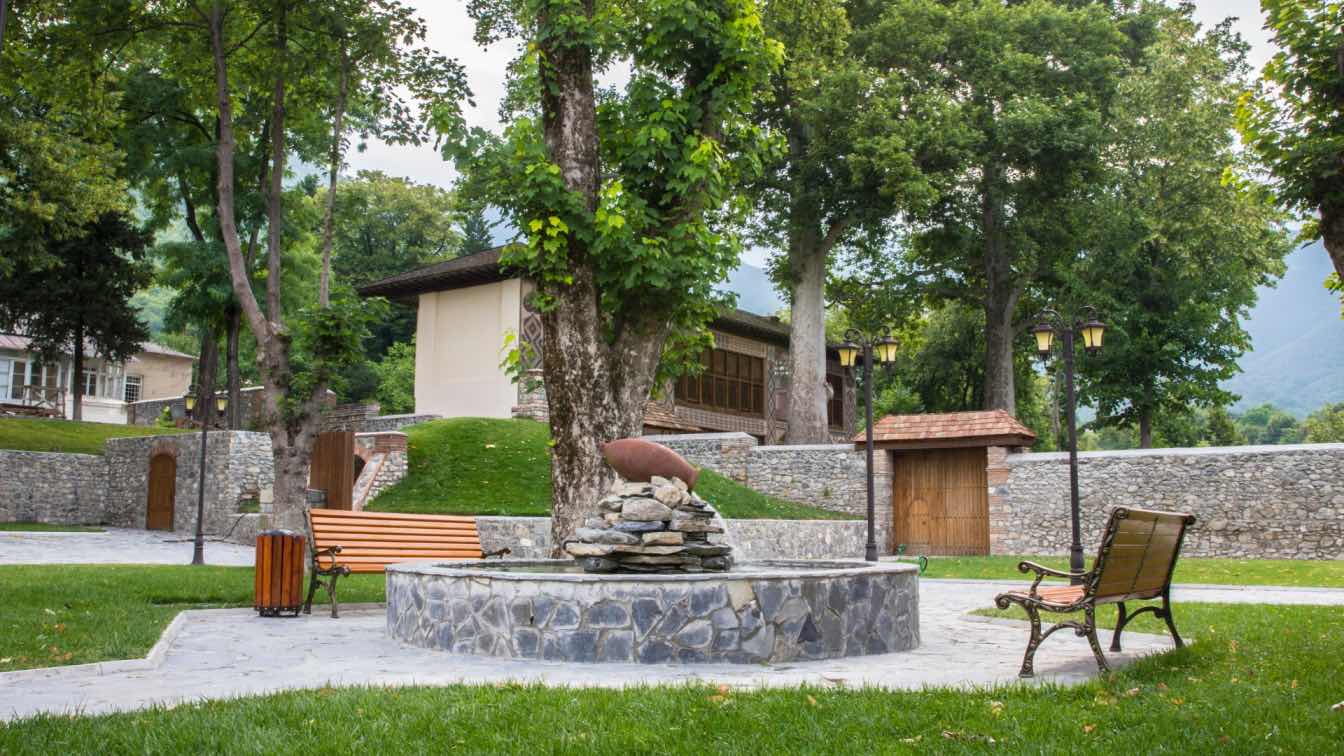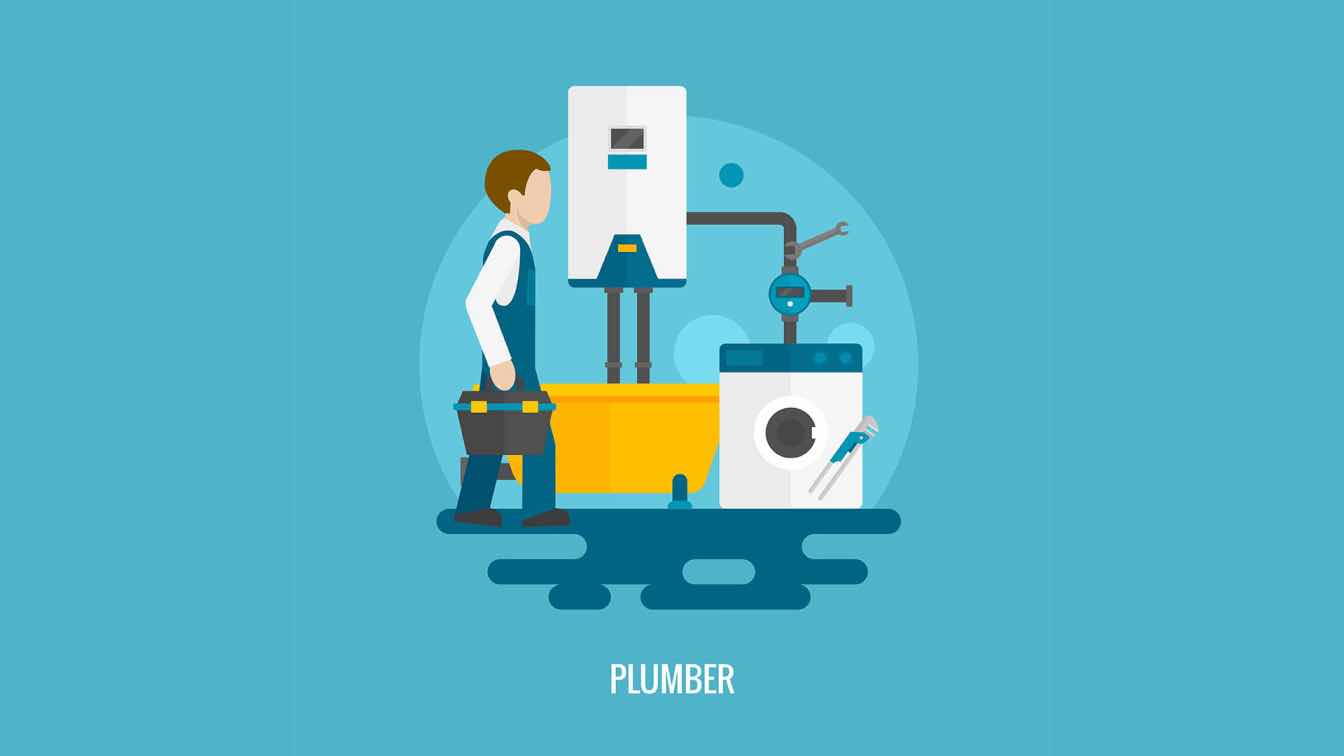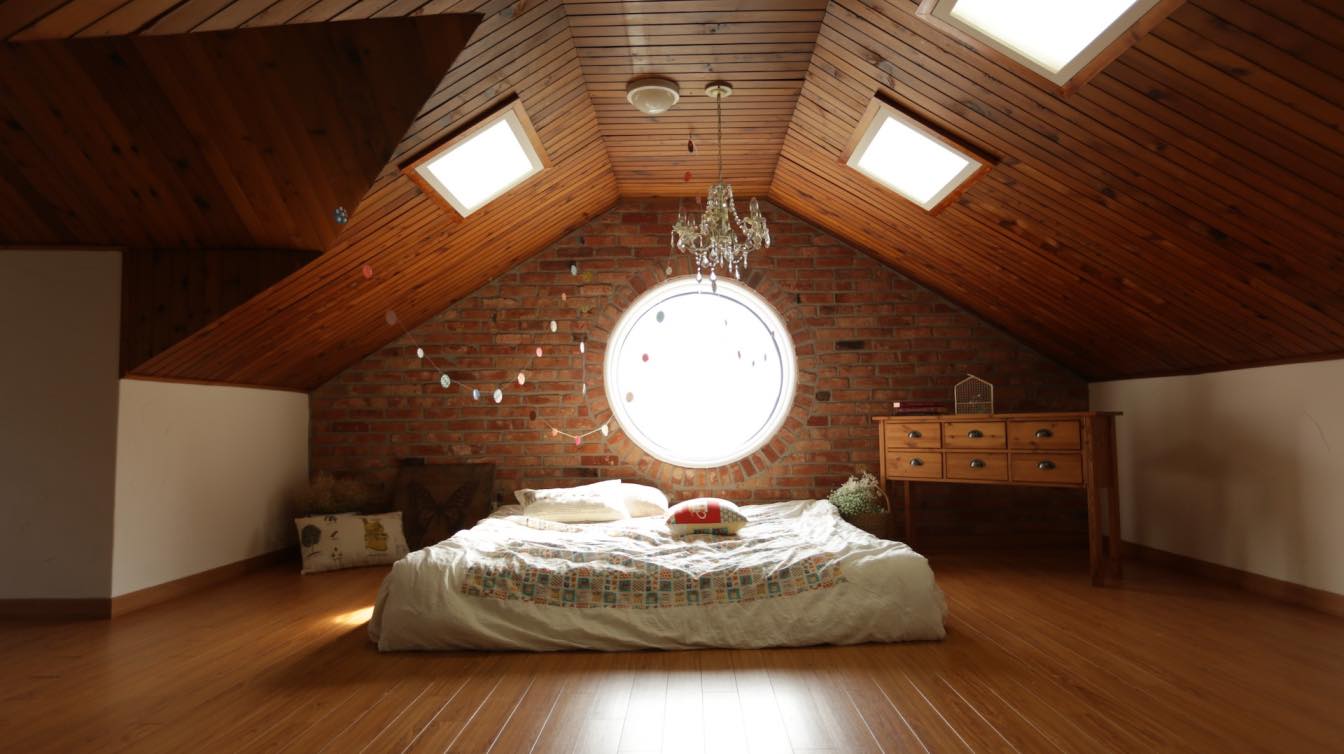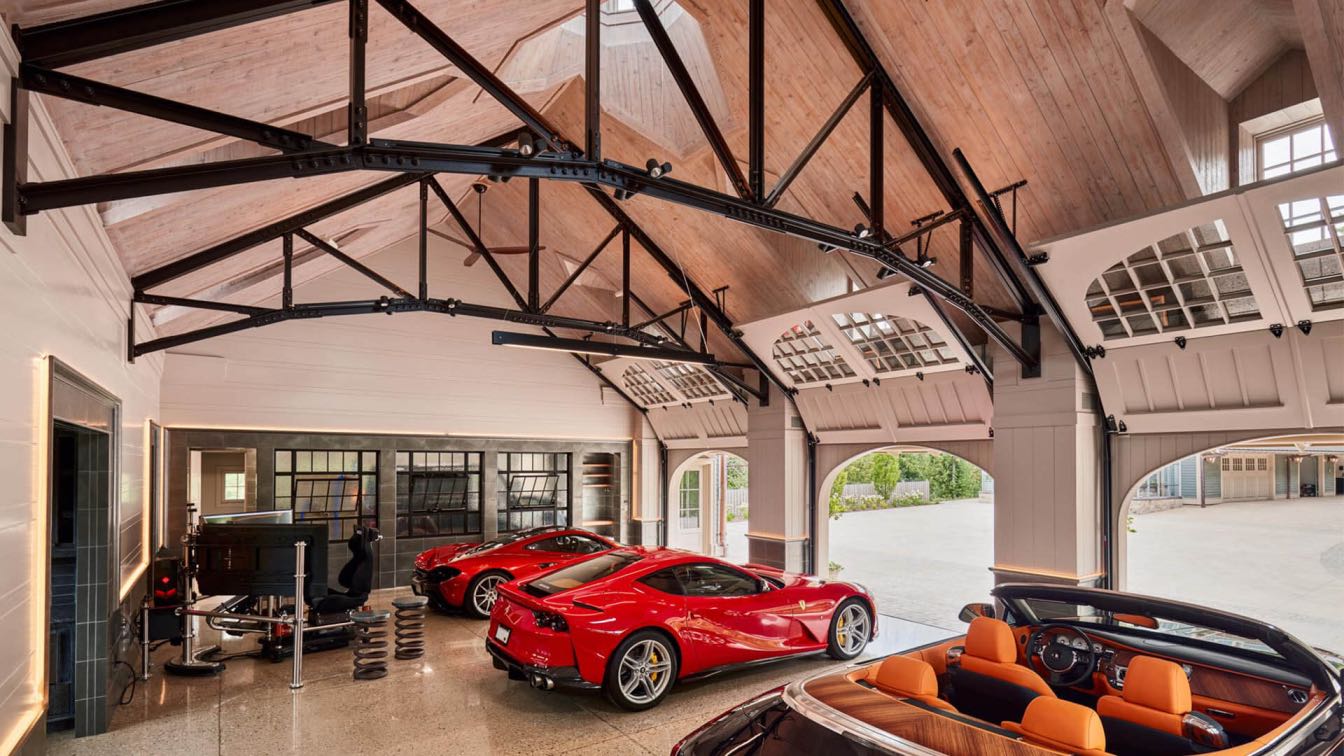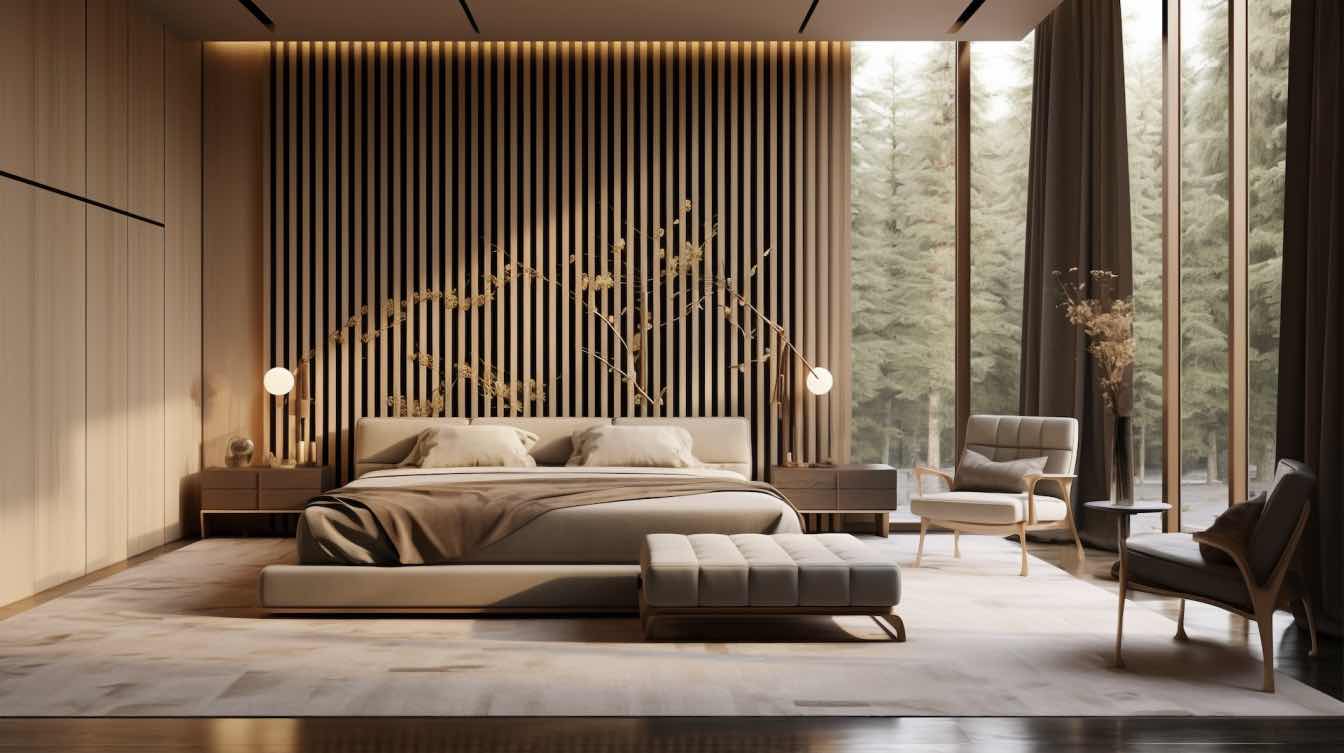Talking of modern architecture, form and function must shake hands—and in hot climates, they better hug. Designing homes in regions with intense sun, high humidity, or arid winds requires careful consideration of the materials we use—especially outdoors, where everything from your patio to your facade faces daily environmental tests.
Whether you’re building in the deserts of Rajasthan, the sun-baked coasts of Southern California, or the dry heat of the Middle East, this guide unpacks some of the best outdoor materials for keeping your spaces cool, stylish, and built to last.
1. Looking for a Timeless Thermal Regulator? It’s Stone
Natural stone has been a go-to for centuries—and for good reason. Stones like sandstone, granite, slate, and limestone are excellent for hot climates because they can absorb heat slowly
Absorb heat slowly during the day, release it gradually at night, and it can also withstand UV exposure, wind, and rain.
Stone patios or cladding work beautifully for homes seeking a grounded, regional identity. In fact, light-colored stones reflect sunlight, keeping surfaces cooler. If you're in a sandy or coastal area, opt for travertine—its porous texture allows for breathability and traction, making it an ideal choice for pool decks or outdoor walkways.
Best design ideas:
- Stone louver façades
- Thermal Stone Courtyards
- Double-Skin Stone Walls
2. Beauty with Breathability With Terracotta & Clay Tiles
Clay materials have been used to cool homes since ancient times, particularly in Mediterranean and South Asian architecture. When used in roofing, wall cladding, or even outdoor tiles, terracotta brings natural insulation, low heat conductivity, and earthy aesthetics that age beautifully.
Modern terracotta tiles are now available in a variety of finishes and formats, making them suitable for both rustic villas and clean-lined contemporary homes.
Best design ideas:
- Perforated terracotta screens
- Clay tile ventilated roofs
- Terracotta jali walls
3. Brilliant, High-Performance Concrete
Forget the cold, grey concrete you associate with parking lots. Today’s outdoor concrete finishes are refined, sculptural, and, when properly treated, incredibly heat-resistant.
Stamped or exposed aggregate concrete can mimic natural textures while reducing glare. It's also a wise choice for outdoor kitchens, decks, and walls, especially when paired with sealants that reflect UV rays and reduce surface temperatures.
For those looking to enhance these outdoor zones with a touch of coastal serenity, Outercle’s coastal-inspired tile collections are a natural complement. These tiles evoke the textures, tones, and moods of the seaside—from sun-bleached driftwood hues and marine blues to organic ripple patterns reminiscent of tidal waves. Whether you're designing a breezy beachside retreat or simply want to channel the calm of ocean air in an inland backyard, these tiles deliver both atmosphere and performance.
When paired with stamped concrete or aggregate foundations, they create layered, tactile environments that invite barefoot comfort, barefoot beauty, and visual harmony—capturing the essence of the coast, no matter where you are.
Best design ideas:
- More dimensionally stable façades
- Resistant to moisture, pests, and sun damage
- Better at withstanding temperature swings
4. Warmth Using Thermal Wood & Engineered Timber
Traditional wood tends to warp, crack, or fade in hot, dry climates. Enter: thermally modified wood—a game-changer for sustainable architecture. Through heat treatment, wood becomes more dimensionally stable, as well as resistant to moisture, pests, and sun damage. Plus it is also going to be better at withstanding temperature swings
It’s the perfect candidate for pergolas, soffits, decking, or facade louvers, especially when paired with thoughtful detailing that promotes ventilation.
Best design ideas:
- Thermal Wood Slatted Ceilings
- Engineered Timber Curtain Walls
- Thermal Wood Decking Systems
5. Reflective Metal Accents Are Sleek & Solar-Smart
Who says that such accepts are never strategic and solar-smart? While metal conducts heat, not all metals are off-limits in warm regions. Materials like zinc, aluminum, and pre-treated steel (such as Corten or Galvalume) can be excellent for roofs, screens, and shading devices.
Aluminum, when powder-coated in light colors, reflects a substantial amount of solar radiation, keeping interiors cooler. Perforated metal screens also work beautifully for diffuse shading, cutting heat while creating captivating shadow play.
Best design ideas:
- Perforated Reflective Metal Canopies
- Brushed Aluminum Wall Cladding
- Stainless Steel Louvers
6. Cool Roof Systems
Roofing makes a massive difference in thermal comfort. Hence, the concept of cool roofs. These are systems designed to reflect more sunlight and absorb less heat. They often use:
- White or light-colored reflective coating
- Special membranes or ceramic tiles
- Metal roofs with heat-reflective paints
This can lower roof surface temperatures by up to 50°F (10°C) compared to conventional roofing, drastically reducing cooling loads inside.
Best design ideas:
- White membrane roofing
- Green roof with reflective underlayer
- Reflective tile or shingle roofs
Choose Wisely
Additionally, you must understand that, at the end of the day, good architecture in hot climates doesn’t fight the environment—it works with it. By choosing the right outdoor materials and pairing them with climate-smart design, you’re not just building a house—you’re creating a sanctuary that stays cool, grounded, and effortlessly modern for decades to come.
Got a favorite material for hot weather builds? Share your experiences or questions in the comments below. Let’s keep the design dialogue going!

